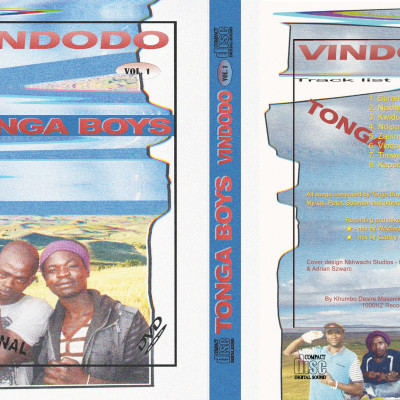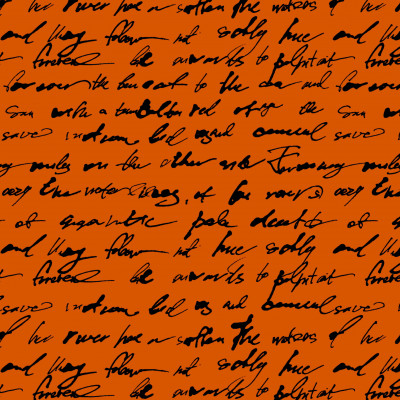With this special issue we are delighted to introduce you to ten new audio papers developed for Seismograf. The 10 audio papers are published in two volumes: The first, #22 Sonic Argumentation I, gathers scholars from artistic research in music, and the second, #23 Sonic Argumentation II, presents papers by scholars from ethnography, literature and sound studies.
**
Since the launch of the audio paper format in 2016, the concept has attracted increasing attention from artist researchers and academics, not only within music and sound studies, but from a variety of research in the humanities. The format of the audio paper is not new, but has many predecessors in experimental radio, the Hörspiel, the radio play and the multitude of podcasts produced in the present day. The particular challenges and possibilities inherent to the audio paper is that such forms of expression are merged with the methods and forms of knowledge in academia, and are subject to peer review in order to be listened to as academic publications.
Since the fall of 2017 we have organised a series of events at the Inter Arts Center in Malmö, Sweden, dedicated to the further development of methods and formats for the audio paper. During a period of a year these gradually grew from being more or less internal seminars with artistic researchers from institutions in Sweden, to an international, two-day symposium in December 2018 with international keynote speakers. This final symposium, entitled Audio Paper Symposium. Performative formats and sonic argumentation, had an open international call, which, besides our Swedish colleagues, attracted participants from Australia, Denmark, England, Germany, Italy, New Zealand, Norway, and Poland.
It has been stimulating to follow and interact with the discussion of the audio papers presented during these three events, and we would hereby like to thank all participants in these events for the work-in-progress that they presented as well as for the rich discussions. Not only could we hereby follow each researchers’ ideas, methods and results, but we could also experience how the concept of the audio paper was gradually both challenged, developed and consolidated. Among the many interesting questions discussed we find: How does the sound of a voice, an accent or a dialect of the narrator in the audio paper influence the topic analysed? What are the main differences between a musical/dramatic/journalistic work and the audio paper? How much information can we expect the listener to cope with? How do we deal with the ethics of bringing field recordings into an audio paper? And how can we best deal with references, citations, indexing and other matters to do with bibliometrics? While all these issues remain open to further development and discussion, the ten audio papers presented in this issue are developed as responses to, and explorations of, some of the questions raised, as well as responding to the Audio Paper manifesto of 2016.
The presentation of these ten new audio papers is the continuation of the exploration of the audio paper format. The publications are both a result of the individual research processes, and are, as a whole, illustrating the many possibilities of a format, where sound, time, timbre, rhythm, simultaneity and complex dramaturgy are refining, and perhaps re-defining, how an academic argument can be presented.The audio paper, just as its companion format of the video essay (Kiss and Berg, 2016), is indeed creating new avenues for practice-based research fields to interact with the larger community in novel ways. But furthermore, this movement away from the hegemony of the written word towards sonic and visual modes of communication holds a promise for an acknowledgement of the transmodal nature of human perception, and an embodied understanding of knowledge, in academia, in the arts and in everyday life.
Tim Ingold reminds us how, in antiquity, the modern distinction between writing and drawing did not hold currency. Rather, these two modes of expression were seen as facets of the same, ‘accessed through the twin gates of sight and hearing, along the roads of painting and speech’ (Ingold 2011, 200). Ingold further argues that ‘we must recognise in the power of the imagination the creative impulse of life itself in continually bringing forth the forms we encounter, whether in art, through reading, writing or painting, or in nature, through walking in the landscape’ (Ingold 2011, p. 208). Hence, the audio paper allows us to engage with knowledge which takes multiple forms, engaging imagination and intuition, the body and the mind, as one. Instead of a sharp cut between experience and academic knowledge, the audio paper offers novel paths, beyond structural and institutional distinctions between art and science, between artistic expression and scientific knowledge.
**
Introducing Sonic Argumentation II
In this second volume of Sonic Argumentation we present scholars from a wider field of academic inquiry. A majority of the contributors in this also have an artistic/practice-based background, meanwhile all have in common that they engage in other, theoretical academic fields as well. In all audio papers in this second volume, aesthetics of sound constitutes a carrier of the argument, but, in counter-distinction to the first five papers, the translation between the discursive and the artistic here often goes in the opposite direction. But again, such processes are reciprocal, and hold the possibility of opening up for yet new layers of possible interpretation of the issues presented.
Robert Willim’s audio paper leads us gradually from the artistic research in Sonic Argumentation part one, into questions within the field of ethnology. His research concerns ‘mundanisation’, e.g. technologies in our homes that have become part of our everyday practices as ordinary ‘invisible’ objects. In textual passages and musical composition, the audio paper grasps and disseminates this unfathomable phenomenon as a complex structure of circuits that goes beyond what can be perceived.
Carlotta Sillano stays within the field of ethnology. With carefully reflected and edited field recordings from her ethnographic fieldwork, Sillano attempts to capture the Genius Loci of an isolated community with only nine inhabitants in a remote hamlet of San Gottardo in Italy. The audio paper represents the rhythm and emotionality of the place, as a ‘new tool for geographical, anthropological, semiotic storytelling’.
Piotr Cichocki continues with an ethnographic approach in his work, now concerning music and sound production in Malawi. With recordings from an ethnographic fieldwork project with the Malawian band Tonga Boys, Cichocki evokes ‘paradoxes of interconnections and otherness’, addressing issues of postcolonialism, not only as a theoretical theme, but also represented in the distortion of the author’s own voice.
Postcolonialism is also touched upon in the audio paper by Heidi Stella and Diana Chester. Here, a point of departure is taken in the exchange of letters between Virginia Woolf and the Chinese artist and writer, Ling Shu Hua, who asked Wolf for help with writing her autobiography. Reflections on ventriloquism, the two women’s relationship and postcolonial matter is combined into a sonic composition that addresses an overall question of how to address a universal audience when using personal material as a central part of the writing.
Finally, Kate Donnovan speculates on the concept of radio listening, expanding it to also embrace spectacular occurrences of natural radio such as the Auroras and lightning. Her audio paper aims at retelling a history of radio listening that is also open to feminist and postcolonial narratives.
All audio papers have been through double blind peer review before publishing.
Bibliography
Groth, S.K .and K. Samson (2016) Audio Papers – a manifesto. Seismograf, August 2016.
Ingold, T. (2011) Being Alive: Essays on movement, knowledge and description. London: Routledge.
Kiss, M. and T. van den Berg: Film Studies in Motion: From Audiovisual Essay to Academic Research Video. Open access Scalar e-book, 2016.
Östersjö, S. (2017) Thinking-through-Music: On Knowledge Production, Materiality, Embodiment, and Subjectivity in Artistic Research. Artistic Research in Music: Discipline and Resistance, edited by J. Impett, pp. 88-107. Orpheus Institute Series. Leuven: Leuven University Press.
DOI: https://doi.org/10.48233/seismograf2300




